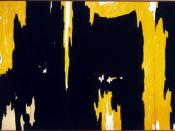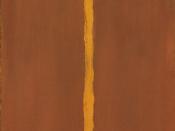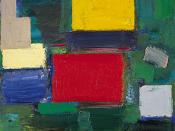Abstract Expressionism.
Abstract Expressionism emerged in New York City and was the foremost modernist direction of the 1940s and 1950s, producing the most daring, adventurous, and forceful art. Abstract Expressionism was an approach to modernism/post-modernism accentuating the uninhibited expression of emotions. Like many other modern movements, it does not describe any one particular style, but rather a general attitude and similar characteristics. It presents a broad range of stylistic diversity within its largely, though not exclusively, nonrepresentational framework.
The artists of Abstract Expressionism often felt uneasy with traditional subjects and styles. They had similar morally loaded themes, often heavyweight and tragic, on a grand scale. In contrast to the themes of Social Realism and regional life that characterized American art of previous decades, Abstract Expressionists valued, above all, individuality and spontaneous improvisation. They felt ill at ease with conventional subjects and styles, neither of which could adequately convey their new vision.
In fact, style as such almost ceased to exist with the Abstract Expressionists, and they drew their inspiration from all directions. The artists who came to be called "Abstract Expressionists" shared a similarity of outlook rather than of style-- an outlook characterized by a spirit of revolt and a belief in freedom of expression.
The products of this genre are characteristically free and loosely structured, stylistically. They tend to focus on the sensual and psychological subjects but essentially avoid any clear representational imitation of reality. The works are usually abstracts and represent forms not found in the natural world. They emphasize freedom of emotional expression, technique and execution or displayed a single unified, undifferentiated field, network, or other image in unstructured space.
Some of the sculptors that applied Abstract Expressionism to their work are Herbert Ferber and David Hare. One of the David Hare's studies "Rooster" (bronze with...


